Shipping processed foods can seem like a difficult task. With so many food-related regulations, the process can often be complex and difficult to understand. However, once you understand those regulations, you’ll see that it’s not as hard as it seems. Don’t let the laws and regulations scare you away from distributing your snack foods from Pennsylvania all across the U.S.!
Shipping processed foods requires strict attention to detail when packaging, handling, and even designing the labels for your snacks. The FDA’s FSMA further complicates the process by requiring extensive sanitation compliance and risk mitigation. In addition to that, you will still need to find a good carrier to move your processed foods safely.
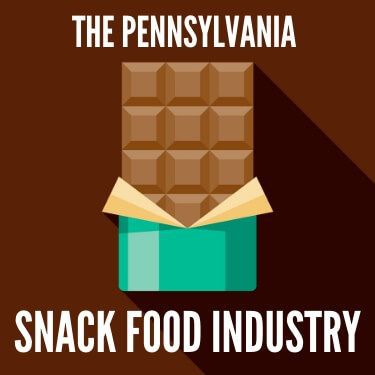
The Keystone State is so well known for its production of snack foods that it is often referred to as the “snack food capital of the world.” The snack food industry is the second largest manufacturing industry in the state, and produces billions of dollars in sales each year. Pennsylvania is home to some of the biggest businesses in the snack food industry, like Hershey’s and Utz, and the state has a long history in the industry.
It might seem odd that Pennsylvania was chosen to produce the majority of U.S. snack foods, but there are actually several factors that made it the best option. For one thing, sugarcane doesn’t grow naturally in the U.S., so Pennsylvania’s ports made it easy to import sugar from around the world. A larger population of German immigrants settling in the area made snacks like pretzels and chocolate popular there as well, so it made sense for production to start—and stay—in Pennsylvania.
Need sugarcane for your snack foods? Learn more about how is sugarcane shipped.
Another reason why snack foods continue to be produced in Pennsylvania is because of its strategic position that makes shipping easier. Pennsylvania is within 500 miles of 40% of the entire U.S. population and is within a day’s travel of most of the east coast.
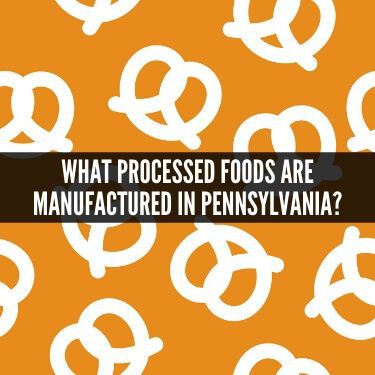
Pennsylvania has a history of producing a huge variety of processed foods, but there are a few iconic snacks that the Keystone State is known for. One such snack is the humble pretzel. In 1861, Lititz Pennsylvania became home to the first commercial pretzel bakery ever opened in the U.S.: the Julius Sturgis Pretzel Bakery. Today, Pennsylvania has moved on to produce roughly 80% of all the pretzels manufactured in the nation.
In addition to pretzels, Pennsylvania has quite the sweet tooth. Many well-known popular sweets such as Marshmallow Peeps, Candy Corn, and Reese’s Peanut Butter Cups were all invented—and are primarily manufactured—in Pennsylvania.
Here’s a list of some of the most iconic processed foods produced in Pennsylvania:
Need freight shipping from Pennsylvania to Florida? What about freight shipping from Pennsylvania to Texas? Regardless of the route, USA Truckload Shipping, powered by R+L Global Logistics, is ready to scale a solution for you.
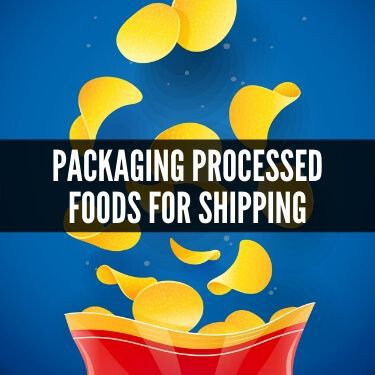
There are several things to consider when finding the best way of packaging processed foods for shipping. For one thing, you need to make sure that all the packaging materials that are going to be in contact with the food itself are sterile, and approved by the U.S. Food and Drug Administration (FDA). Any material that contacts the food is classified as an “indirect food additive,” and using a material that isn’t approved for use in food packaging could result in the food being considered “adulterated.”
Adulterated foods are those that have been potentially contaminated, and they cannot legally be sold for consumption. Care should be taken to inspect everything to make sure it is an acceptable material, including paper, plastic, cardboard, adhesives, and even the chemicals used for sterilizing those materials.
Next, you should design the package itself. You need to leave space for a label, but your primary concern should be protecting the food inside from damage. Labels can be included after the fact. The packaging choices you make are going to depend on the kind of food you want to package. Chips, for example, are often packed in foil or plastic bags with nitrogen gas to keep them fresh and intact. Cakes are often packed in cardboard boxes or plastic clamshell packaging to prevent the delicate confectionary from getting squished.
Finally, you should make sure that whatever packaging you select is tamper-evident, so consumers can be sure that nothing was added to the food after it left your manufacturing plant. Although this is not technically required by law for food products, it is helpful for safety, quality, and legal reasons.
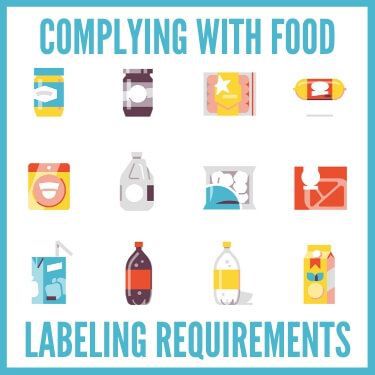
Now it’s time for you to think about the labels for your processed food containers, and there are a lot of different rules that you’re going to need to know. The Fair Packaging and Labeling Act, enacted in 1967, outlines the specific sections that must be included on the labels, where, and at what size. This is regulated for the primary purpose of preventing consumers from being deceived by untruthful or misleading marketing techniques. It also, however, allows consumers to compare the quality, price, and other factors between competitors to determine the best value.
Some items are allowed exceptions, and this is usually the case if the item in question is packaged individually within a larger, labeled container. Items that are not labeled for individual resale should have that stated on the individual package somewhere. Although they are often exempt from the majority of the regulations, they may still have to include certain things such as a quantity statement or allergy information.
The first thing you should obviously include on a label is the name of the product itself. It should be printed in large text on the principle display, which is the largest label, usually on the front or top of a package. This would be the name that is copyrighted to the company, and it should describe or suggest the nature of the product itself. For example, Reese’s Peanut Butter Cups are a relatively self-explanatory product name.
However, a product that has a name that doesn’t effectively communicate what the product is should have a description printed nearby. Most cereals have fun names to excite children, but printed beside the name on the principle display is a statement like “sweetened corn cereal” to give more context of what the product is.
In addition to the name of the product, you should have the brand name on the principle display as well, though it can be much smaller than the product name. You could also place the brand logo and name on all sides of the container as well, to make sure it is easy to see from any angle.
The quantity of content statement is a small section, usually at the bottom of the principle display, that tells consumers how much food is in the package. This is typically expressed in net weight or fluid volume statements depending on which one is applicable. However, be aware that in order to be compliant with the Fair Packaging and Labeling Act’s 1992 amendment, the statement needs to be stated in both avoirdupois measurements (ounces and pounds) and metric measurements (grams and liters).
When printing the quantity on the package, know that it should always be stated in the largest appropriate unit of measurement. So, instead of saying “24 Ounces,” it should say “1.5 Pounds.” Instead of “1,500 mL,” it should say “1.5 L.” However, both units of avoirdupois measurement can be used simultaneously, as in “1.5 lbs (24 oz) 680 g.” This allows for customers to more easily compare the value to products that might have a lesser volume or quantity.
When creating the nutritional information label, there are a few things you are going to need to include to comply with the Nutritional Labeling and Education Act. First, you will need to put the serving size at the top of the label. In order to figure out what the serving size should be, you should consult the FDA’s Reference Amounts Customarily Consumed table. That table provides a quick reference for many different kinds of food so you can easily determine the serving size of the snack. For example, a serving size of chips and crackers should be 30 g, and hard candies should be 15 g.
Once you have the serving size, you will need to list the total calories, fat, sodium, carbs, and protein. In addition to listing the total amount of each nutrient, you will also need to include percentages for how much of the daily recommended nutritional values the snack satisfies—otherwise known as the percent of daily value.
You should also note more specific details about each of the nutrients if it is applicable. For most candies, the carbs come entirely from added sugars, so that should be on the label as well. If there are any other vitamins or nutrients that the snack provides, then you can also list those underneath the five core nutrients.
The ingredients list is one of the easier requirements to comply with in comparison to the other labeling requirements. Any ingredient used to make the food, even water, should be included in a list at the bottom of the informational label. Ingredients should be listed in order by weight, with the first ingredient being the heaviest. If any ingredients comprise only 2% or less of the total weight, then they can be left at the end in arbitrary order after the phrase “contains 2% or less of:...”
Additionally, the Food Allergen Labeling and Consumer Protection Act requires that any product that contains one or more of the 8 major food allergens should list those ingredients at the end in obvious, bolded text to make it easy to see.
The 8 major food allergens are:
Also on the information panel, you will need to list the names and addresses of the manufacturer, packer, or distributor. You may also include more than one, or all of the above, though only one is legally required. It is also typically alongside a phone number or other method of contact. This information must be on the informational panel, either below the ingredients or off to one side, and it cannot be anywhere else on the label or the product will be deemed noncompliant.
If you want to make a claim on the label about the health benefits of the product, you should do so with extreme caution. It might be beneficial for your marketing efforts to include the words “less sugar” or “fat-free” on the label, but you need to be sure that those claims are 100% accurate. Otherwise, your food could be considered “misbranded,” and therefore unsellable.
A label can also make a claim about the food’s ability to lower risk for certain diseases, like how Cheerios claim to reduce the risk of heart disease. This is acceptable if the product claim has been verified by the FDA, but there is a line that you cannot cross. You cannot claim—or even suggest—that the product can diagnose, treat, or cure any type of condition. If you aren’t sure if your label communicates the correct claim, then it is best to ask the FDA for approval and advice, and rework the wording if necessary.
There are several different dates that typically appear on food labels, and each one means different things despite their similar connotations.
There is no uniformly regulated process for determining what these dates can or should be, and they are entirely at the discretion of the manufacturer.
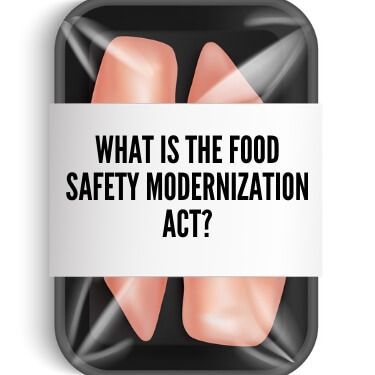
The Food Safety Modernization Act (FSMA) was the FDA’s response to the more than 128,000 documented hospitalizations from preventable foodborne illnesses in the U.S. Rather than placing the responsibility for this on the Centers for Disease Control and Prevention, the FDA focused on preventing the conditions that result in foodborne illnesses developing, rather than treating those cases that had already developed.
To achieve this goal, the FDA set out to finalize 7 major regulations that would improve food handling techniques, sanitation, record-keeping, and education.
The first of the FSMA regulations relates to preventive controls for human food. That might sound vague and somewhat confusing, but it is meant to cover a wide scope of regulations to ensure a safe and hazard-free environment for human food. Preventing contamination of food in all locations, vehicles, and situations is easier said than done, but is well worth the effort to prevent food-borne illnesses. Preventive controls mean addressing a problem and reducing the likelihood of it occurring again.
This regulation requires that all employees that handle the production, packaging, and handling of food are properly trained to do their specific job. They should be educated on food safety and sterilization, and they must always practice good hygiene. It is never acceptable to have an unqualified person stand-in for someone else’s job.
This regulation also specifies the need for a food safety plan, which entails:
Although less applicable in most cases, preventive controls for animal food is important to keep in mind for several reasons as well. It operates in almost exactly the same way as preventive control for human food, and utilizes the same strategies for hazard evaluation, mitigation, and strategizing.
The produce safety rule establishes scientific standards for farmers to adhere to when growing produce for human consumption. Since produce is just as likely to be contaminated outside as raw materials are likely to be contaminated in processing, this regulation is just as important as the first one.
To be compliant with this rule, farmers need to test and measure the quality of the water and soil that the produce is grown in. Both the water and soil should be clean and free from microbial organisms such as E. Coli. The soil that a plant is grown in can be manure or compost, but a reasonable amount of time should be allowed to pass after applying new compost before the produce should be harvested. The recommended wait time between the application of manure and the harvest of crops is at least 90 days.
Like with the preventive control rule, all workers need to be hygienic, healthy, and well trained to use the necessary tools and handle produce.
All foods, whether in sealed containers or not, can be contaminated in transportation if the proper protocols are not followed. There are many things that can go wrong during transportation, and that is unfortunately one of the hardest things to control as a shipper or retailer, since the responsibility usually falls on a third party.
The vehicles that are intended to be used to transport the food need to have a few requirements in order to be compliant. First, it must be easy to clean in its entirety, so that contaminants do not build up in the container that would hold the food. Secondly, the vehicle should be able to maintain the appropriate temperature that the food requires to stay fresh and safe to eat. If necessary, it should also be able to keep out the elements of nature that could soil the quality of the food.
The way food is packaged and maintained in the truck is just as important. Processed foods, for example, should not under any circumstances be in close contact with raw foods, such as meat or dairy. Foods should also be kept away from accidental contamination from allergens, like wheat and soy. And of course, any truck that previously contained allergens or raw food should be thoroughly cleaned before it is loaded again.
As always, all loaders, truckers, and other transportation personnel must be properly educated and trained to use the technology and tools available to them. They must be able to properly measure and adjust the temperature, and keep things sanitary at every step. However, as previously stated, this training is the responsibility of the carrier company, and not the manufacturer or farmer.
If the supplies and raw materials you are using to produce the processed food is imported from another country, then you will need to make sure that you are in compliance with the foreign supplier rules. The purpose of this rule is to ensure that all food from other countries meets the U.S. food safety standards, which means that imported food will be held to the same standard as food produced domestically.
The Foreign Supplier Verification Program (FSVP) is a program designed to ensure that U.S. importers conduct the same preventive controls procedures for their foreign suppliers that domestic producers do. This includes hazard identification, mitigation, and correction.
Third-party certification programs are entirely voluntary, but some importers, manufacturers, or farmers may choose to pursue one for several reasons. For one thing, it can save you time, since the third-party company can verify your compliance on your behalf. It can also increase your authority and credibility relating to the safety and quality of your food products. It is also particularly important for companies interested in becoming eligible to import or export food.
This regulation is in place to protect the U.S. food supply from widespread intentional adulteration and applies to any company that ever comes in contact with food or food industry materials. Food can be intentionally adulterated in a number of different ways, but this rule is specifically designed to prevent such instances that pose widespread risks to public health. This rule requires companies to establish a defense plan in case of a public health emergency, and to review—and rewrite if necessary—that plan every 3 years.
The first step in creating an actionable plan is to conduct a vulnerability assessment. Different materials, industries, and locations will have different risks and levels of severity, so you will need to determine how damaging adulteration could be in your particular space. You will also need to determine how easy it would be for someone to come in and tamper with the food product.
Then, for any vulnerability discovered, you need to come up with a strategy to mitigate the risks on a case-by-case basis. In most cases, increasing surveillance, accountability, and verification protocols can help decrease the risk of intentional adulteration.
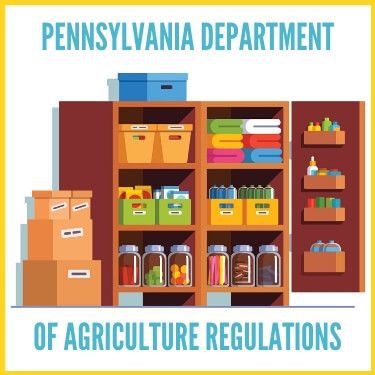
In addition to the FSMA rules, Pennsylvania has included several additional regulations that food facilities need to comply with. These regulations apply to you if you produce, manufacture, cook, package, mix, process, ferment, can, freeze, handle, or transport any food in Pennsylvania intended for human consumption.
The first of these rules relates to commercial food establishments. Any location or vehicle that is intended to contain food for production, packaging, transporting, storing, and so on must register with the Pennsylvania Department of Agriculture’s (PDA) Bureau of Food Safety. The PDA will inspect the location to ensure compliance with the FSMA and other applicable laws. The only exception to this rule is if the business is under the sole jurisdiction of the United States Department of Agriculture (USDA) or the Food Safety Inspection Service (FSIS).
Next, any retail location that sells food directly to consumers requires a specific kind of retail license. That includes convenience stores, restaurants, bars, grocery stores, schools, and farmer’s markets. These licenses must be obtained before the retail location starts to sell food, and if the location is transferred to a new proprietor, then a new license will need to be obtained.
Finally, all licensed food facilities must have at least one certified food manager on-site at all times. One selected employee must enroll in a manager certification program to become certified, and they will oversee all food handling operations to ensure that things are being done according to all legal regulations. If an employee is a certified food manager in one location, they cannot also act as a food manager at any other location.

Shipping food of any kind is inherently risky if done carelessly. No matter how processed or well-packaged a food item is, improper management of the temperature during shipment could ruin an entire truckload of snacks. Most processed snacks will stay shelf-stable for a long period of time, but that is at room temperature. Room temperature is usually understood to be between 60 to 70 degrees Fahrenheit, and that is a safe temperature to keep almost anything on a shelf since most stores and homes would be kept at that temperature while storing the snacks.
Some snacks tend to fare better in higher temperatures than others. Potato chips and pretzels may be able to handle harsh summer heat, but most snack cakes will not be able to maintain their quality in temperatures higher than 80 or 90 degrees Fahrenheit. Any icing on the snacks will begin to melt and pool in the package, and the moisture in the cake could cause premature spoilage.
In most cases, a regular freight truck will get the job done just fine. However, if you are shipping delicate snack foods to southern states in the middle of summer, you might want to invest in a temperature-controlled truck. This will guarantee that your shipments get delivered as the same quality they left the manufacturer in.
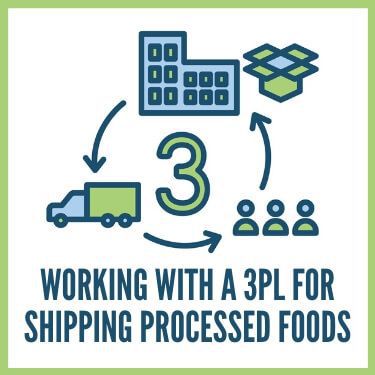
Any time you have to use a third-party company to handle anything for your business, it can feel like a gamble. It’s a trust exercise, and if the other company fails to deliver the right results, your company could end up in trouble with your customers, your manufacturers, and the law.
With that said, it’s no surprise that choosing the right company to manage your logistics processes can be stressful. There’s a lot on the line, and the last thing you want is to lose an entire shipment of processed foods. But how can you make the best choice when selecting a carrier, a warehouse, or any other third party company?
Working with a good third-party logistics (3PL) company can eliminate a lot of the stress. Once you know you have a good 3PL, then you don’t need to worry about finding any of the other companies to manage the transportation and storage of your goods. Not only will the 3PL manage the transportation of the products, but they will also find the most trustworthy carriers for you, so you don’t have to. Additionally, they can arrange long- or short-term storage options with equally trustworthy warehousing partners.
All you need to do is get in contact with a good 3PL, and they will do the rest.
If you need help shipping processed foods from Pennsylvania, R+L Global Logistics is the 3PL you can trust. Our customer service is unmatched, and we take your business seriously. We only work with the most carefully selected and trustworthy carriers to move your freight safely. In addition to that, we can offer a range of different services and flexible solutions to meet every customer’s needs.
We offer services such as:
Shipping processed foods doesn’t have to be difficult. Reach out to us at (866) 353-7178 or chat in at the bottom of the screen to get a free quote today!
R+L Global Logistics
315 NE 14th St., Ocala, FL 34470